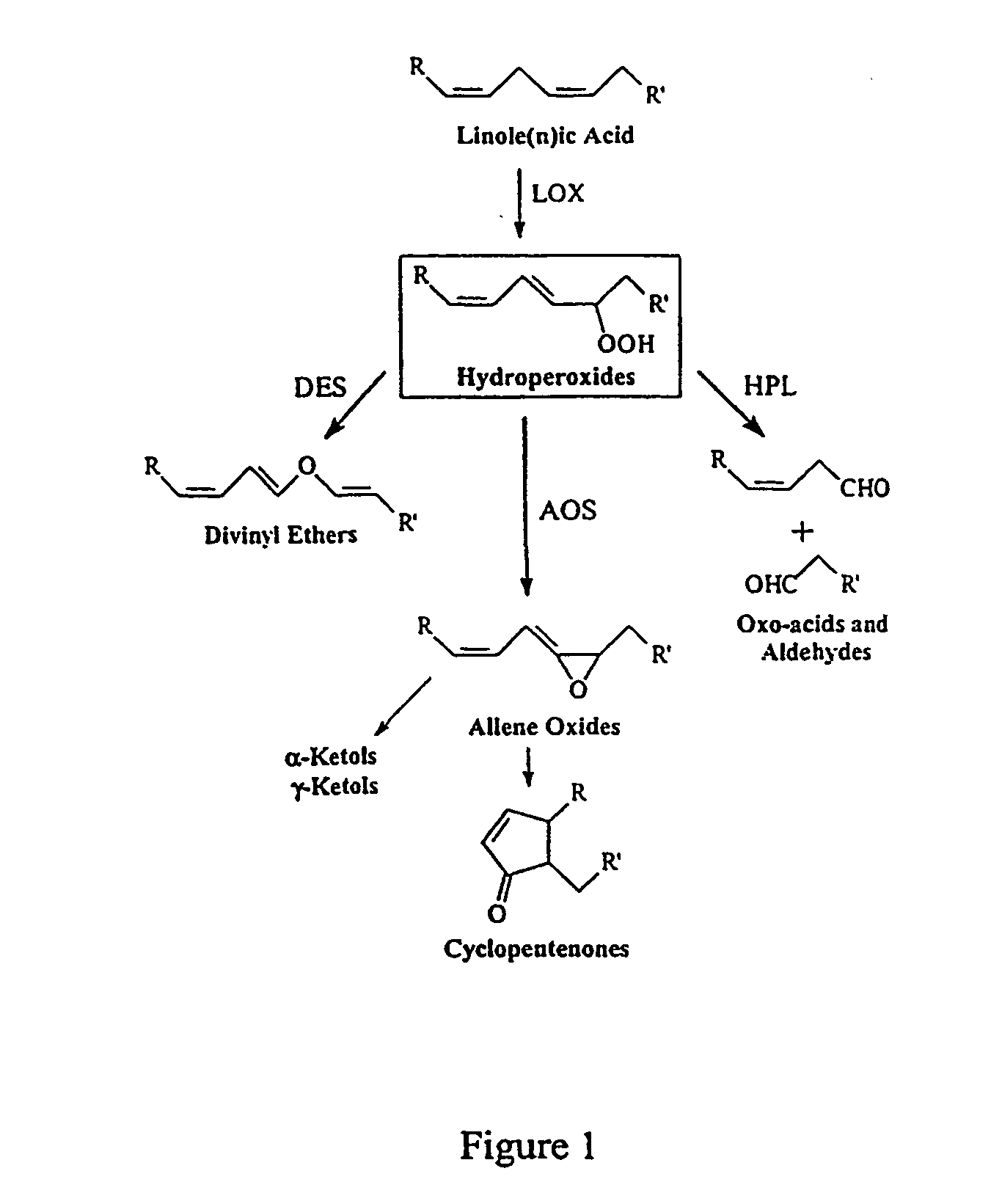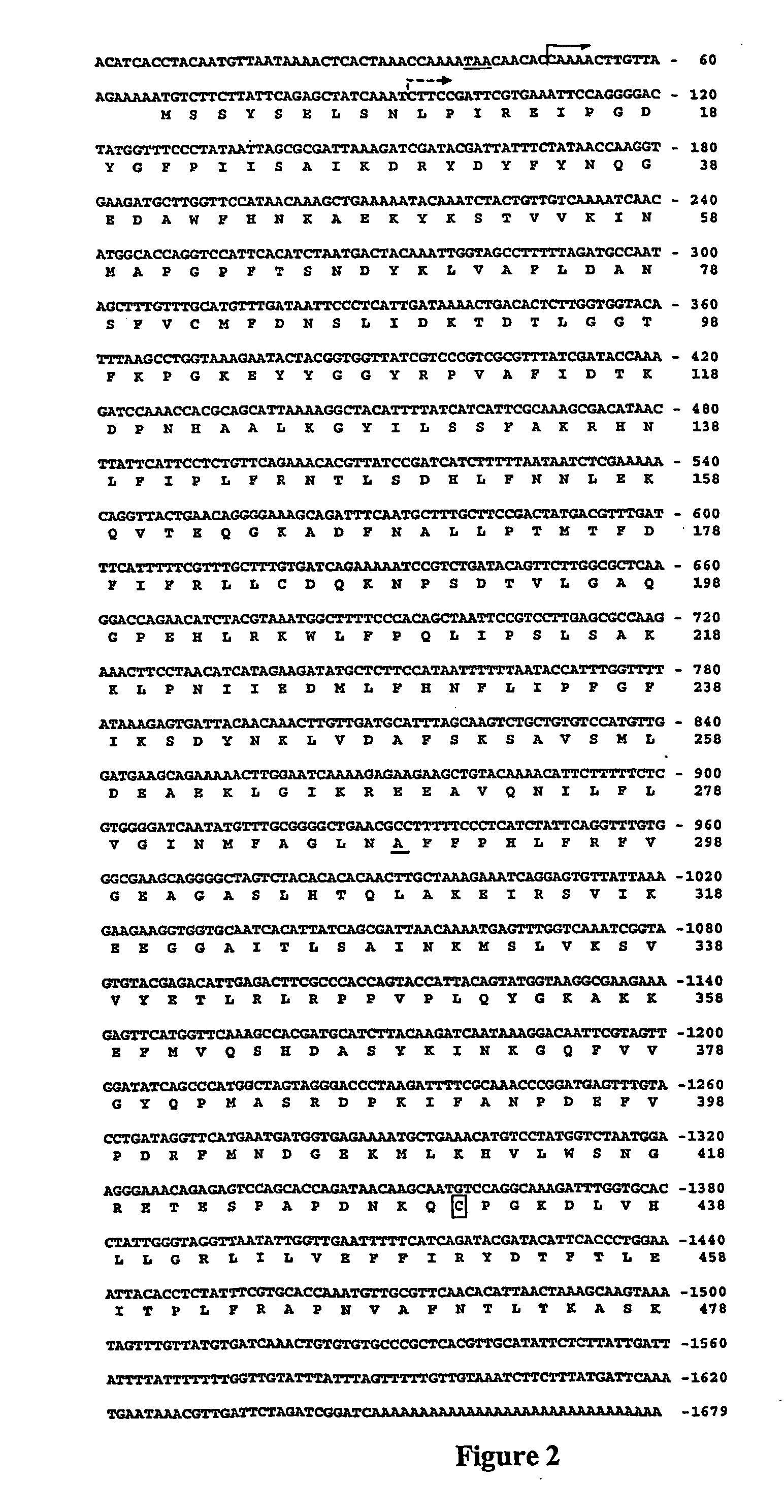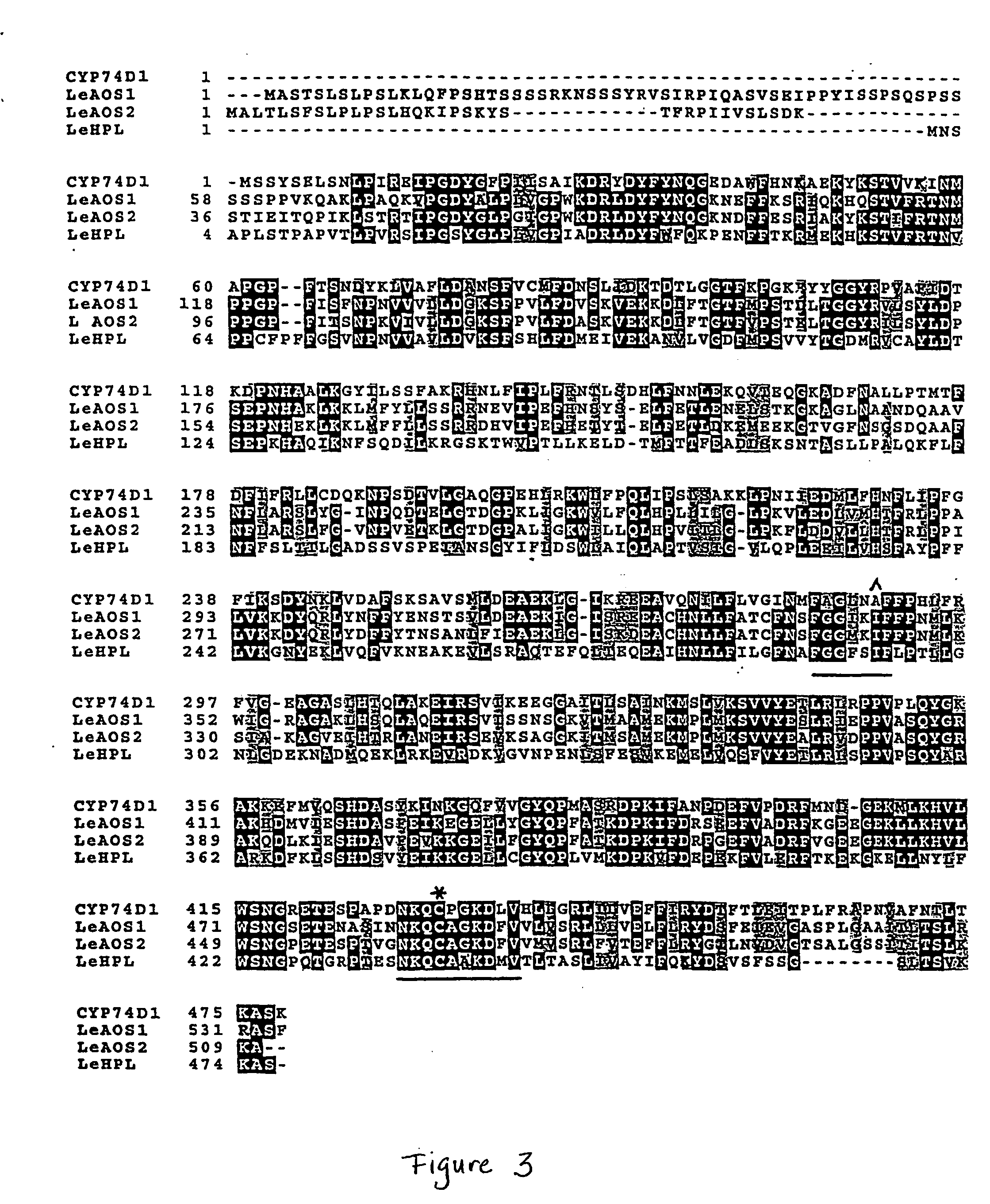Divinyl ether synthase gene, and protein and uses thereof
a technology of ether synthase and ether, which is applied in the field ofdivinyl ether synthase gene and protein, can solve the problems of no late blight resistant potato cultivars that meet us commercial standards, crop loss due to pest attack remains a serious problem, and the control is more difficul
- Summary
- Abstract
- Description
- Claims
- Application Information
AI Technical Summary
Benefits of technology
Problems solved by technology
Method used
Image
Examples
example 1
Experimental Procedures
[0320] A. Plant Materials and Growth Conditions
[0321] Tomato (Lycopersicon esculentum cv. Castlemart) plants were grown in Jiffy peat pots (Hummert International) in a growth chamber maintained under 17 h of light (300 (E m.sup.-2s.sup.-1) at 28.degree. C. and 7 h of dark at 18.degree. C. Flowers and fruits were harvested from plants maintained in a greenhouse. Seeds of L. pennellii (LA716) and the introgression lines used for RFLP mapping were obtained from the Tomato Genetics Resource Center (Davis, Calif.).
[0322] B. cDNA Cloning and Sequencing
[0323] Basic molecular techniques were performed as described previously (Sambrook et al., Molecular Cloning: A Laboratory Manual, 2.sup.nd Ed., Cold Spring Harbor Laboratory, Cold Spring Harbor, N.Y. [1989]). The tomato EST clone (EST277670; GenBank No. AW034008) was obtained from the Clemson University Genomics Institute. The cDNA insert was sequenced in its entirety on both strands at the DNA sequencing facility in ...
example 2
Identification and Cloning of Nucleic Acid Sequence Encoding Divinyl Ether Synthase
[0339] A. Identification of a Tomato cDNA Encoding a Novel CYP74 P45
[0340] A BLAST search (Altschul et al., J. Mol. Biol. 215: 403-410([1990]) of the tomato EST database (http: / / www.tigr.org / tdb / lgi / ) was conducted to search for potential novel CYP74 sequences.
[0341] A tentative consensus sequence (TC17776), constructed from multiple overlapping ESTs (Quackenbush et al., Nucleic Acids Res,. 28, 141-145 [2000]) was identified that was similar to but clearly distinct from known CYP74 sequences in tomato and other plants. DNA sequencing of one EST clone (EST277670) revealed a 1,631-bp cDNA insert containing an open reading frame predicted to encode a 478 amino acid protein. TAIL- and RT-PCR experiments provided additional sequence information at the 5' end of the transcript. DNA sequencing of this region revealed an in-frame stop codon 27 bp upstream of the first AUG, indicating that the cDNA encodes a f...
example 3
Characterization of Divinyl Ether Synthase Protein and Gene
[0348] A. Purification and Biochemical Properties of the Protein
[0349] To enable purification of CYPD74D1 by affinity chromatography, this protein was initially expressed in E. coli with an N-terminal 6x-His tag, as 6H-CYPD74D1; the presence of the histidine tag was intended to improve the affinity of the protein for resins. However, attempts to purify 6H-CYP74D1 using metal-affinity chromatography were unsuccessful, due to poor binding of the protein to the resins. An alternative solution to this problem was to construct an expression vector with a 6x-His tag added to the C-terminus of the protein. This form of CYP74D1, designated CYP74D-6H, accumulated to relatively high levels in bacterial cells that were induced for expression (FIG. 6). Approximately 85% of the DES activity in the crude homogenate was recovered in the 100,000.times.g pellet, indicating that the protein is associated with E. coli membranes. Solubilization...
PUM
| Property | Measurement | Unit |
|---|---|---|
| temperatures | aaaaa | aaaaa |
| pH | aaaaa | aaaaa |
| temperature | aaaaa | aaaaa |
Abstract
Description
Claims
Application Information
 Login to View More
Login to View More - R&D Engineer
- R&D Manager
- IP Professional
- Industry Leading Data Capabilities
- Powerful AI technology
- Patent DNA Extraction
Browse by: Latest US Patents, China's latest patents, Technical Efficacy Thesaurus, Application Domain, Technology Topic, Popular Technical Reports.
© 2024 PatSnap. All rights reserved.Legal|Privacy policy|Modern Slavery Act Transparency Statement|Sitemap|About US| Contact US: help@patsnap.com










